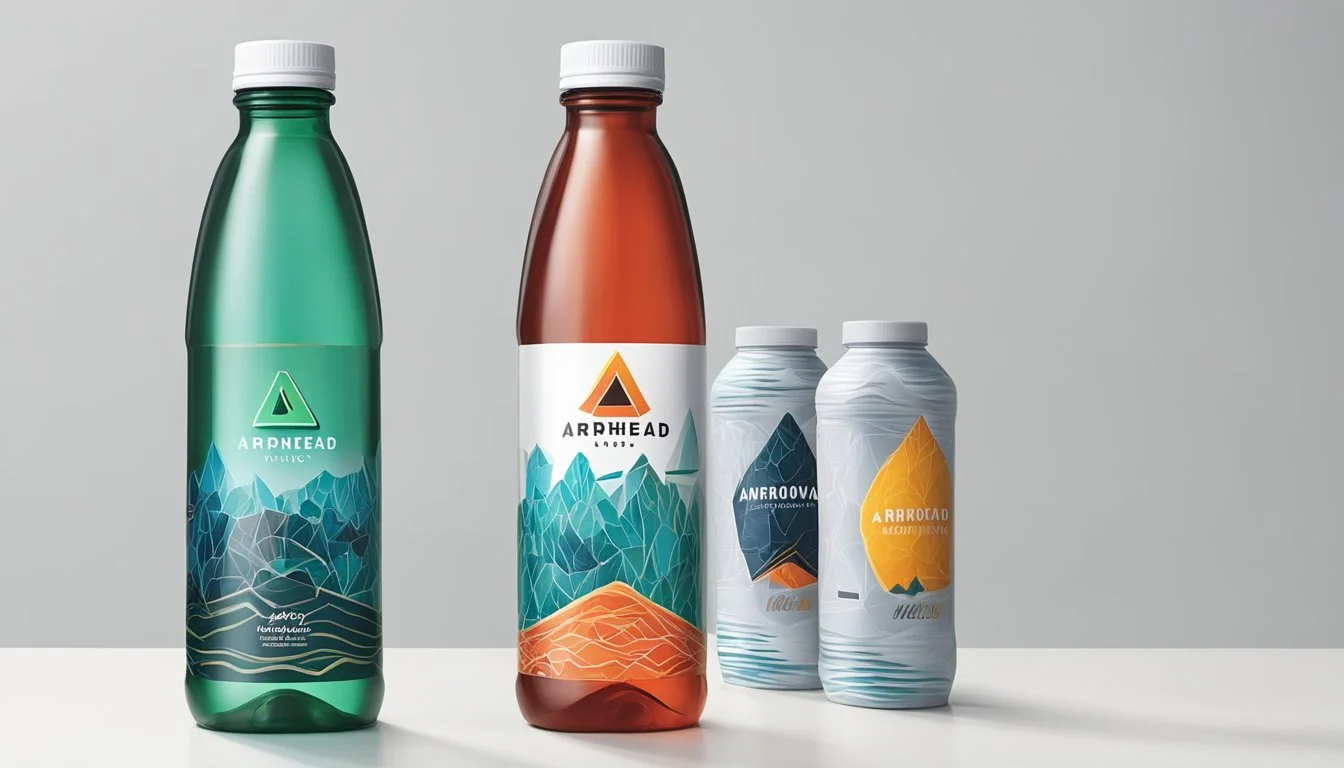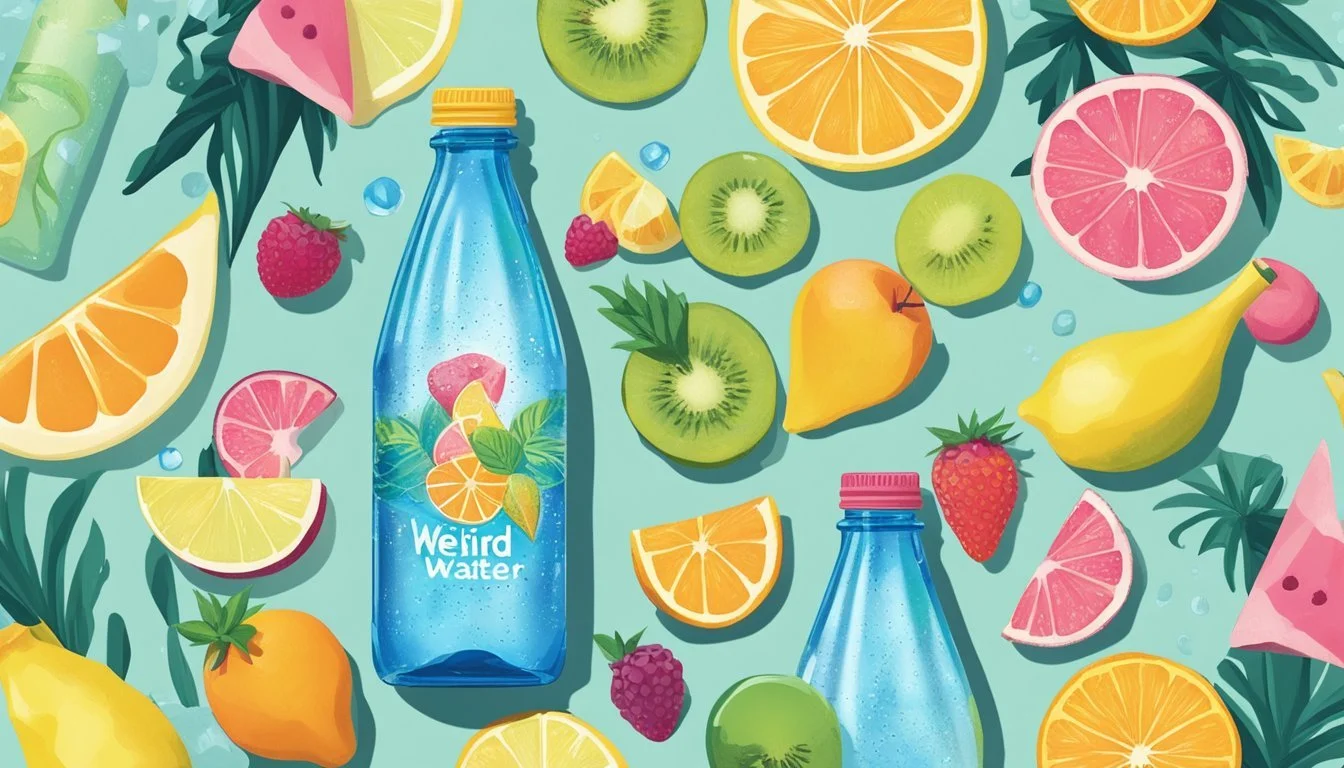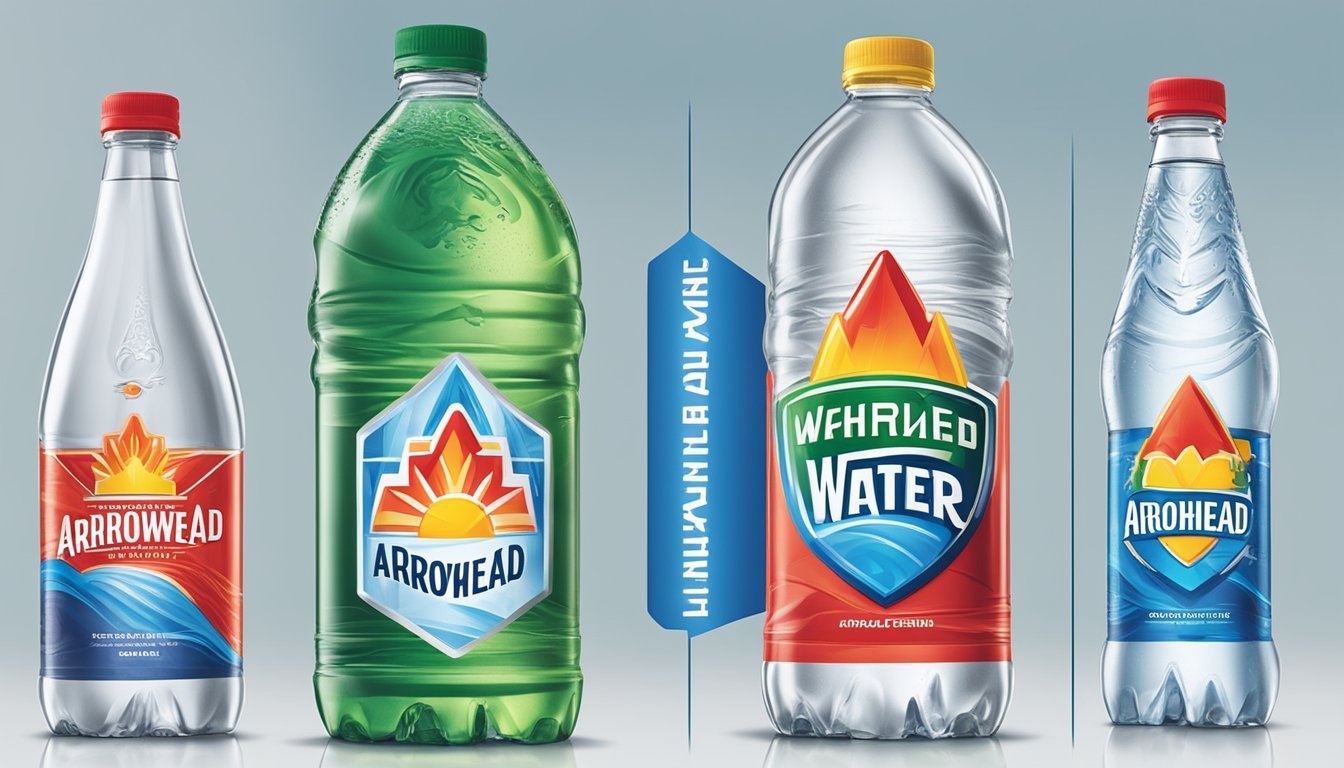Arrowhead vs. Weird Water
Choosing the Superior Bottled Water
Choosing the right bottled water is more than just a matter of preference; it's about ensuring quality and hydration. Consumers often find themselves debating between popular brands like Arrowhead and newcomers like Weird Water. When comparing Arrowhead to Weird Water, Weird Water consistently stands out for its unique blend and crisp taste.
Arrowhead, a well-known brand, has built its reputation on providing reliable, pure water sourced from carefully selected springs. On the other hand, Weird Water differentiates itself with an innovative approach to its mineral composition, offering a refreshing alternative. Both brands aim to deliver hydration, but they do so in notably different ways that cater to diverse consumer preferences.
Whether you're a casual consumer looking for daily hydration or a connoisseur seeking the finest bottled water experience, understanding these differences can enhance your water choice. This blog post will dive deeper into these brands, providing valuable insights that will help you decide which bottled water is better suited to your needs.
The Essence of Bottled Water
Understanding the essence of bottled water involves recognizing its various types and their unique characteristics.
Bottled waters are classified broadly into spring water, mineral water, and purified water. Each type comes from different sources and undergoes distinct processes.
Spring water is collected from natural springs. It typically retains natural minerals, giving it a unique taste.
Mineral water contains a higher concentration of dissolved minerals like calcium and magnesium. These minerals must be naturally present and not added later.
Purified water goes through processes like distillation, deionization, or reverse osmosis to remove impurities and contaminants. It often starts as tap water or underground sources.
Comparison of Key Factors
Type Source Characteristics Spring Water Natural spring Rich in natural minerals Mineral Water Natural mineral springs Higher mineral content Purified Water Various (often tap) Highly processed and pure
Source significantly influences the water’s taste and purity. For instance, Arrowhead sources its water from multiple natural springs, which can affect its mineral content and pH level.
Flavor, purity, and mineral content importantly differentiate the bottled waters. Enthusiasts might prefer mineral water for its health benefits, while those seeking a neutral taste might lean towards purified water.
In the context of Arrowhead, it’s noted for its spring water sources, which are subject to natural variations in taste and mineral content.
Weird Water, assuming it falls into one of these categories, should be compared on similar parameters to determine which bottled water better meets consumer preferences and standards.
Comparing Water Sources
Understanding the differences in water sources can help make an informed decision when choosing between Arrowhead and Weird Water. Key aspects to consider include groundwater origins in natural springs and the various processing methods.
Natural Spring Water Origins
Arrowhead bottled water is sourced from natural springs, typically situated in protected areas to preserve water quality. These springs originate from groundwater, which flows naturally to the earth's surface. The water collected from these springs often contains minerals like calcium and magnesium, contributing to its distinctive taste.
Arrowhead's water sources can include regions like the San Bernardino Mountains. The careful selection of springs ensures minimal contamination and optimal purity. The spring water is naturally filtered as it travels through layers of soil and rock, enhancing its cleanliness and mineral content.
Natural spring water is often favored for its refreshing taste and natural mineral composition. For consumers prioritizing unprocessed, mineral-rich options, Arrowhead's sourcing from protected springs provides a compelling choice.
Processed Water Explained
Weird Water, contrastingly, may rely on more processed sources. This can include tap water that undergoes various treatments to ensure safety and improve taste. Common methods include filtration, reverse osmosis, and distillation, targeting contaminants and impurities.
Processed water often involves the removal of dissolved solids and potential pollutants. Some processed water brands add minerals back into the water for taste and health benefits. These methods ensure that the water meets rigorous safety standards, but the final product lacks the natural mineral profile found in spring water.
Vapor-distillation, used by some brands like Smartwater, produces highly purified water by evaporating and condensing it. The resulting product is free of most contaminants but also stripped of natural minerals, often supplemented post-processing to enhance flavor.
In summary, natural spring water offers a naturally mineral-rich composition, whereas processed water provides consistency and purity through advanced treatments.
Branding in the Bottled Water Industry
Branding plays a crucial role in shaping consumer perceptions and preferences in the competitive bottled water market. Each brand employs unique strategies to distinguish itself and create a lasting impression on consumers.
Brand Profiles
Arrowhead is well-known for its 100% Mountain Spring Water, sourced from the San Bernardino Mountains. This brand emphasizes natural and pure water, capitalizing on its long history and ties to natural sources.
Weird Water, though not as established, leverages an unconventional approach. It uses vibrant packaging and humorous marketing to appeal to a younger audience, differentiating itself through quirky branding.
Aquafina, owned by PepsiCo, focuses on purity through a rigorous seven-step filtration process. This positions the brand as a clean and reliable choice.
Fiji Water, recognized for its artesian water sourced from the Yaqara Valley, uses packaging that highlights its exotic and premium nature.
Evian promotes itself as a luxury brand, sourcing water from the French Alps. Its branding often highlights wellness and rejuvenation.
Nestlé Pure Life targets a broad consumer base with its emphasis on affordability and widespread availability.
Dasani, a Coca-Cola product, combines technology and taste, using its mineral blend to differentiate itself in the market.
Branding strategies in the bottled water industry reflect the unique selling points of each brand and play a significant role in their market positioning.
Health and Safety Standards
Ensuring bottled water adheres to health and safety standards is crucial for consumer trust. Key factors include compliance with regulations and monitoring for contaminants.
EPA and FDA Regulations
Bottled water, like Arrowhead and Weird Water, must comply with regulations set by the Environmental Protection Agency (EPA) and the Food and Drug Administration (FDA).
The FDA regulates bottled water as a food product, ensuring producers meet stringent water quality standards. These standards involve contaminant levels and manufacturing practices. Meanwhile, the EPA oversees tap water but its standards often serve as benchmarks for the FDA. Compliance with both sets of guidelines aims to guarantee water is free from harmful levels of contaminants, including lead, arsenic, and microbial pathogens.
Contaminant Levels and Types
Examining contaminant levels reveals the importance of stringent water testing. Common contaminants include PFAS chemicals, lead, and heavy metals.
PFAS chemicals are notable for their potential health risks, including cancer and thyroid issues. Comprehensive testing ensures these chemicals remain below harmful levels.
Lead contamination, often resulting from aging infrastructure, poses significant health risks, particularly to children. Bottled water brands conduct regular tests to maintain lead-free products.
Heavy metals such as arsenic are monitored to ensure concentrations are within safe limits. These metals can cause long-term health effects if consumed at high levels. Maintaining low contaminant levels is essential for consumer safety and health.
Taste and Quality Analysis
Examining Arrowhead and Weird Water involves looking at taste, mineral content, and pH levels. This analysis considers both the scientific aspects and consumer opinions to provide a comprehensive comparison.
The Role of Minerals and PH Levels
Mineral content heavily influences the taste and health benefits of bottled water. Arrowhead sources its water from natural springs, contributing to a diverse mineral profile which includes magnesium, calcium, and sodium. This enhances its crisp, slightly salty taste.
Weird Water places emphasis on purity, often achieved through sophisticated purification processes. This generally results in fewer dissolved minerals, offering a cleaner taste but potentially lacking the subtle flavors imparted by natural minerals.
pH levels further affect water quality. Arrowhead typically showcases a balanced or slightly alkaline pH. This can be beneficial for those seeking to neutralize acid in their diet. In contrast, Weird Water's pH can vary, sometimes leaning towards neutral or slightly acidic, influenced by its purification method.
Taste Test Comparisons
Numerous taste tests have revealed varying perceptions among consumers. In blind taste tests, Arrowhead frequently ranks lower than high-end brands like Fiji and Evian, likely due to its distinct mineral taste. Participants either appreciate its robust flavor or find it overpowering compared to smoother waters.
Weird Water often performs differently, depending on its exact mineral content and pH level. Its focus on purity results in a neutral taste, which can lack the unique profiles found in naturally sourced waters like Arrowhead, Voss, or Smartwater.
In consumer reports, preferences split based on taste versus health perceptions. Those prioritizing taste might favor brands with distinctive profiles, while those valuing purity may lean towards highly filtered options.
Packaging and Environmental Concerns
The packaging choices for Arrowhead and Weird Water have significant implications for material use and environmental footprint. This includes factors such as the types of bottles used and respective sustainability efforts.
Bottle Manufacturing and Materials
Arrowhead uses plastic bottles for packaging its mountain spring water. The plastic used is typically PET (polyethylene terephthalate) which is lightweight and convenient but raises concerns due to its environmental impact and reliance on fossil fuels.
Weird Water opts for innovative packaging, using materials like recyclable aluminum or cartons made from renewable resources. These alternatives potentially reduce carbon emissions and reliance on plastic. Weird Water aims for BPA-free materials, addressing health concerns linked to plastic bottles. The move to alternative packaging showcases their commitment to environmental stewardship and sustainability.
Environmental Impact and Sustainability
Plastic bottles contribute to pollution and require significant energy for production and recycling. Arrowhead has initiatives to reduce carbon emissions and encourage recycling but still faces challenges regarding plastic waste and its environmental impact.
Weird Water’s use of aluminum and carton packaging presents a more eco-friendly option. Aluminum is highly recyclable, and carton packaging often uses renewable materials, reducing the carbon footprint. This approach highlights Weird Water’s focus on sustainability, aiming to minimize environmental damage through responsible packaging choices.
Consumer Convenience and Accessibility
Arrowhead and Weird Water offer differing levels of consumer convenience and accessibility. The following points explore their availability in retail locations and their portability for various uses.
Retail Availability
Arrowhead can be found in many grocery stores across the United States, ranging from large supermarkets to local convenience stores. This widespread distribution ensures that consumers in various states can easily find Arrowhead water.
In contrast, Weird Water has more limited availability. It is primarily sold online and in select specialty stores. This could be less convenient for consumers who prefer to purchase their water in-person.
Retail Presence Comparison:
Brand Grocery Stores Convenience Stores Online Specialty Stores Arrowhead Yes Yes Yes Limited Weird Water Limited No Yes Yes
Portability and Use Cases
Arrowhead offers a variety of bottle sizes, making it suitable for different occasions. Whether it’s the large multi-gallon jugs for home use or the smaller bottles for on-the-go hydration, Arrowhead provides options.
Weird Water, on the other hand, focuses on eco-friendly packaging, often using reusable containers. While this is beneficial for the environment, it might be less convenient for those who need disposable options for quick and easy use.
Portability Comparison:
Brand Bottle Sizes Reusable Options Best for Travel Best for Home Use Arrowhead Multiple Sizes Few Yes Yes Weird Water Standard Size Only Yes Limited Yes
Each brand has its advantages, but the preferences may vary based on the consumer's lifestyle and needs.
Advanced Water Technologies
Different bottled water brands use a variety of advanced technologies to improve water quality and taste. By exploring methods such as filtration and purification, as well as the benefits of water enhancement features, the selection criteria become clearer.
Filtration and Purification Methods
Both Arrowhead and Weird Water use multiple stages of filtration and purification to ensure water quality. Reverse osmosis is a common method, which removes contaminants by forcing water through a semipermeable membrane. Additionally, ultraviolet (UV) light and ozone sterilization are applied to kill bacteria and other microorganisms without adding chemicals.
The reverse osmosis method is especially effective in removing dissolved salts and impurities. UV light treatment is another crucial step, providing a chemical-free method to disinfect water. Ozone sterilization not only purifies but also enhances the water's taste by oxidizing pollutants. This multi-barrier approach ensures that the final product is both safe and refreshing.
Water Enhancement Features
Weird Water enriches its bottled water by adding electrolytes like potassium and magnesium, which can improve taste and provide additional health benefits. Electrolytes help maintain the body’s fluid balance, support nerve function, and regulate muscle function.
Besides electrolytes, important minerals are often retained or reintroduced to enhance flavor and nutritional value. These enhancements make the water not only hydrating but also beneficial for overall health. By focusing on these advanced technologies, both Arrowhead and Weird Water deliver high-quality products designed to meet the needs of their consumers. Through continuous innovation in purification and enhancement, these brands strive to offer superior bottled water options.
Water Varieties and Alternatives
Different bottled water options cater to diverse preferences, whether one prefers a bubbly sensation or a specific flavor profile. This section explores these varieties alongside innovative alternatives, giving a comprehensive look at the choices available.
Sparkling vs. Still Water
Sparkling water, such as La Croix, is carbonated, offering a fizzy alternative to standard water. It appeals to those who enjoy the sensation of bubbles, with mineral benefits depending on the source. Carbonated water can often taste slightly salty due to naturally occurring minerals.
Still water, like Core Hydration, is non-carbonated and often touted for its purity and hydration efficiency. It usually undergoes processes like reverse osmosis or distillation to remove contaminants. Brands like Arrowhead capture water from natural springs, emphasizing its mineral content and natural origin.
Flavored Water Innovations
Flavored water includes added flavors without the calories or sugars found in traditional soft drinks. Brands innovate by incorporating essences like citrus or berry. This makes hydration more appealing to those who may find plain water too bland.
New innovations in flavored water often involve natural ingredients and no artificial additives. Offerings from brands like La Croix provide a range of flavors from lemon to kombucha-infused variants, maintaining a balance between taste and health benefits. These waters cater to health-conscious consumers looking for a flavorful yet calorie-free hydration option.
The Bottled Water Market Outlook
The bottled water market is experiencing significant growth driven by consumer demand for healthier beverage options. Innovations and emerging eco-friendly brands are reshaping the industry landscape.
Industry Growth and Projections
The bottled water market has seen substantial growth. According to industry reports, the market is projected to continue growing steadily in the coming years. Coca-Cola and PepsiCo, giants in the beverage industry, have significantly invested in bottled water brands such as Dasani and Aquafina, respectively. These companies utilize advanced purification processes like Coca-Cola’s Hydro-7.
The International Bottled Water Association highlights the increasing consumer preference for bottled water over sugary drinks. This shift is attributed to rising health consciousness among consumers. By 2025, the market is expected to surpass $200 billion in global sales. Increased urbanization and improvements in distribution channels also contribute to the industry's expansive growth.
Emerging Brands and Trends
New brands are making a mark with innovative approaches and eco-friendly packaging. Just Water and Boxed Water are notable for their sustainable packaging, catering to environmentally conscious consumers. These brands offer alternatives to traditional plastic bottles, such as paper-based containers and reusable cartons.
LifeWtr, another PepsiCo product, focuses on premium offerings with artistic, aesthetically pleasing packaging. Meanwhile, Flow water distinguishes itself with naturally alkaline spring water packaged in recyclable materials. These trends reflect a broader movement toward sustainability and health-conscious choices within the market.
Emerging brands continue to challenge established companies, driving innovation and promoting more environmentally friendly practices. As consumer preferences evolve, brands that adapt to these demands are likely to achieve substantial growth and market share.
The Bottom Line
When choosing between Arrowhead and Weird Water, several factors come into play. Taste preferences, purity levels, and brand transparency are just the beginning.
Taste is highly subjective. Some consumers may prefer the natural spring water taste of Arrowhead. Others might lean towards the uniquely filtered, crisp profile of Weird Water.
Purity and quality are significant. Arrowhead is known for its rigorous sourcing and bottling standards. Weird Water, meanwhile, often highlights its unique purification methods, aiming for a clean and refreshing profile.
Brand reputation can also influence choices. Arrowhead has a longstanding presence in the bottled water market, lending it a sense of reliability. Weird Water, though newer, often markets itself with innovative practices and ethical sourcing.
Quick Comparison:
Factor Arrowhead Weird Water Taste Natural spring water Crisp, unique filtered water Purity High purification standards Innovative purification techniques Reputation Longstanding market presence Newer, ethical sourcing Price Generally affordable Often perceived as premium
Different people may prioritize factors differently. If natural taste and a long history appeal, Arrowhead might be the go-to. For those seeking innovation and ethical practices, Weird Water is a strong contender.








